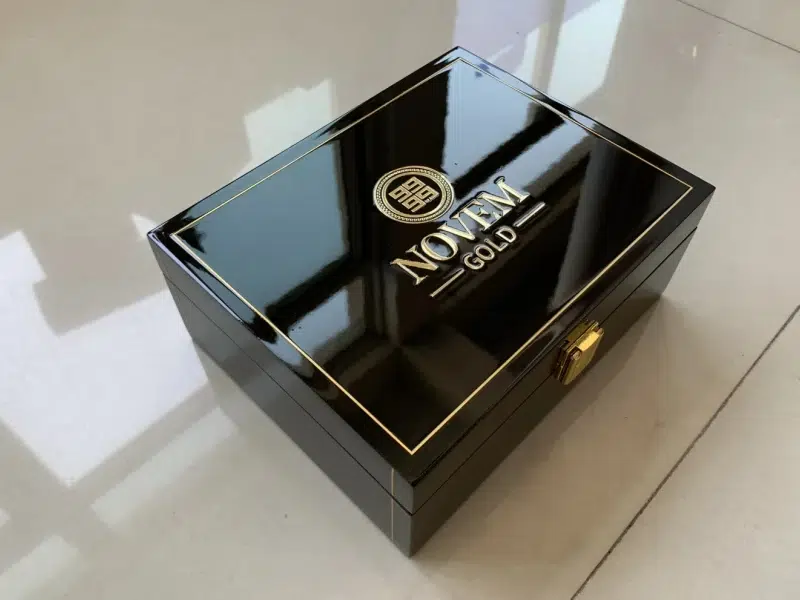
Achieving a flawless, bubble-free piano lacquer finish on large luxury gift boxes is one of the most demanding challenges in high-end wood finishing. The bigger the surface, the more difficult it becomes to maintain uniformity, clarity, and depth—without introducing microbubbles.
So, what specific steps can manufacturers follow to eliminate bubbles and deliver that glass-smooth finish luxury clients expect?
In this guide, I’ll walk you through the full process based on years of hands-on work with oversized lacquered packaging projects.
Why are large surfaces more prone to air bubbles during lacquer application?
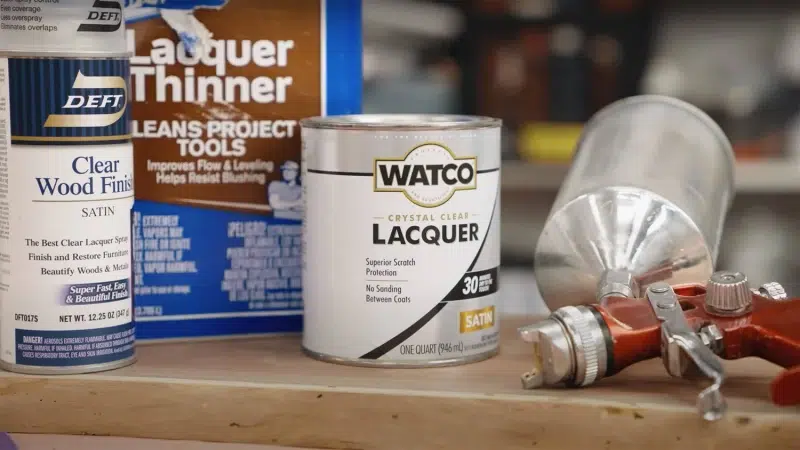
Large, flat surfaces expose more area to the air, increasing the chances of solvent entrapment, uneven atomization, and air disturbance during drying.
More time is needed to coat these areas evenly—and the longer lacquer stays open, the more chances it has to trap airborne particles or bubbles.
Key Challenges on Larger Surfaces
- Extended Open Time1: Wet lacquer sits exposed longer, increasing bubble risk.
- Overlap Zones2: Spray lines may trap air where strokes intersect.
- Operator Fatigue3: Inconsistent hand movement causes uneven thickness and micro-foaming.
- Lack of Ventilation Uniformity: Airflow can disturb only part of the surface, causing patchy curing.
When working on boxes over 50cm wide, we always apply lacquer in sections using controlled spray patterns with timed overlaps—this helps avoid foaming in the middle of the surface.
How does proper surface preparation reduce the risk of trapped air?

A porous or improperly sealed surface is one of the main causes of bubbles. Wood naturally contains tiny air pockets that expand when covered with solvent-rich lacquer.
For large boxes, even minor inconsistencies in sealing can result in visible blisters or pinholes in the final finish.
Steps to Prepare the Surface Properly
-
Moisture Check
Wood should have no more than 10–12% moisture content4. -
Grain Filling
Especially for open-grain woods like oak or ash. Use a high-solid filler to close pores. -
Sealer Coat Application
Apply at least 1–2 coats of sanding sealer and fully cure before lacquer. -
Initial Sanding
Sand the sealed surface with 400–600 grit to create a flat, non-absorbent base.
On larger panels, we always work under raking light to ensure no pinholes or open grain remain before moving to lacquer.
What is the ideal viscosity and mixing5 method for lacquer to avoid bubbles?
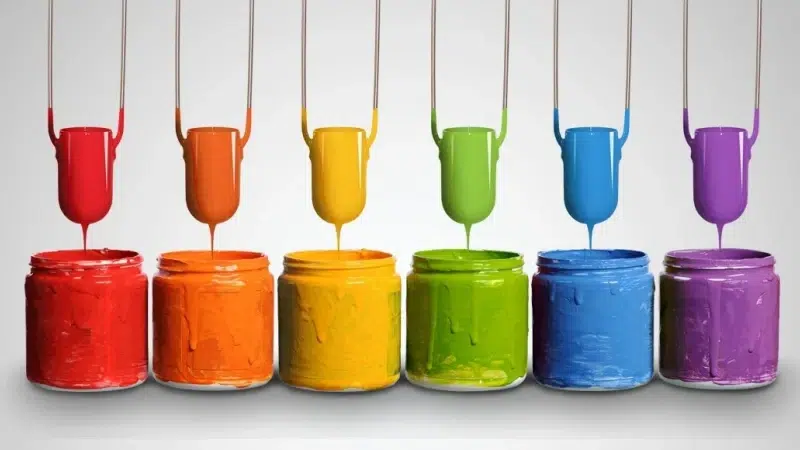
Improperly mixed lacquer—or lacquer that’s too thick—can trap air during spraying or brushing. Viscosity and mixing are absolutely critical to avoid foaming.
Ideal Mixing Process
-
Use Gentle Stirring, Not Shaking
Stir slowly in a figure-8 motion. Shaking introduces microbubbles. -
Let Mixed Lacquer Sit
After stirring, allow it to rest for 15–30 minutes to release any trapped air. -
Strain Before Use
Always pass lacquer through a 120–150 mesh nylon filter before pouring into the spray cup.
Recommended Viscosity
| Lacquer Type | Ideal Viscosity (Zahn #2 Cup) |
|---|---|
| Nitrocellulose | 18–22 seconds |
| Polyurethane | 20–25 seconds |
| Polyester | 25–30 seconds |
We always adjust viscosity based on room temperature and spray gun tip size. In warmer weather, thinner lacquer flows better and flashes faster, reducing bubble risk.
How do application tools (spray guns, brushes) impact bubble formation?
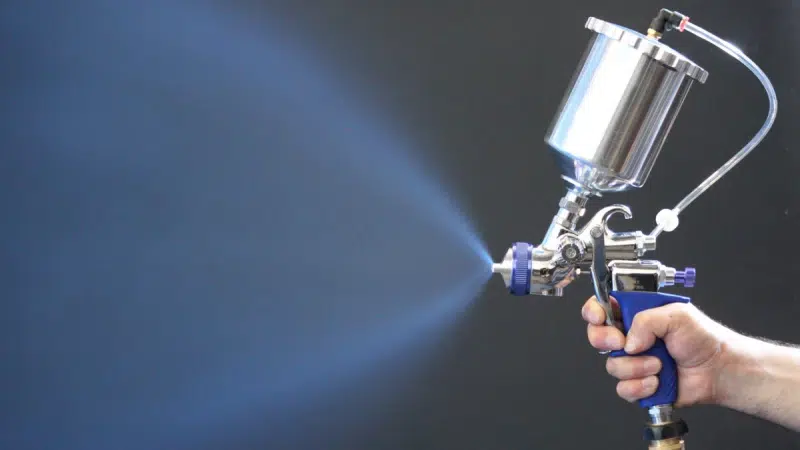
The wrong application tool—or the wrong settings—can cause air to be atomized into the lacquer, creating tiny bubbles that only become visible after curing.
Spray Gun Settings That Matter
✔ Fluid Tip Size
For large panels: 1.3–1.5 mm is ideal. Too small = over-atomization; too large = orange peel.
✔ Presión atmosférica
Keep within 20–25 PSI for HVLP guns6. Too high causes turbulence, too low gives uneven coat.
✔ Anchura del ventilador
Use wide, even fan pattern (20–25 cm) to reduce overlap and puddling.
✔ Spray Distance
Maintain 15–20 cm distance from surface, moving at a steady speed.
Brush Application Notes
- Utilice foam or synthetic bristle brushes7—natural bristles can trap air.
- Solicitar with overlapping strokes in one direction only.
- Tap out any bubbles immediately using a foam pad.
All our spray operators go through annual calibration training—using a poorly tuned spray gun on a luxury finish is simply not acceptable.
What environmental controls help prevent air entrapment during drying?
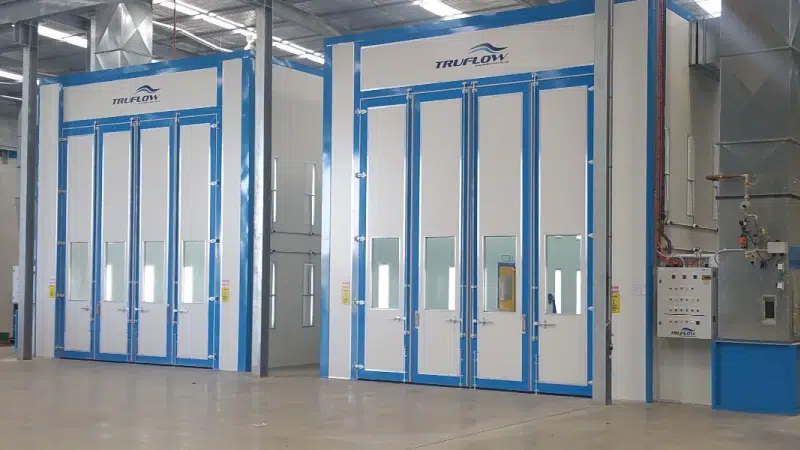
Once the lacquer hits the surface, it must dry evenly and gently. Uncontrolled environments lead to solvent flash-off8 that traps air and moisture within the finish.
Ideal Drying Environment
| Factor | Ideal Range |
|---|---|
| Temperatura | 20–25°C (68–77°F) |
| Relative Humidity | 50–60% |
| Air Movement | Laminar, filtered airflow |
| Tiempo de secado | 12–24 hours between coats |
✔ Positive Pressure Spray Booths9: Keep dust and debris out.
✔ Downdraft Ventilation10: Removes solvents and excess moisture without disturbing the surface.
✔ Static Control Measures: Prevent dust attraction and air instability.
In summer, we run extra air filters and slow down production to allow full off-gassing. A fast cure often means a soft or bubbly finish.
¿Cómo puede sanding between coats11 y slow curing12 improve final surface clarity?
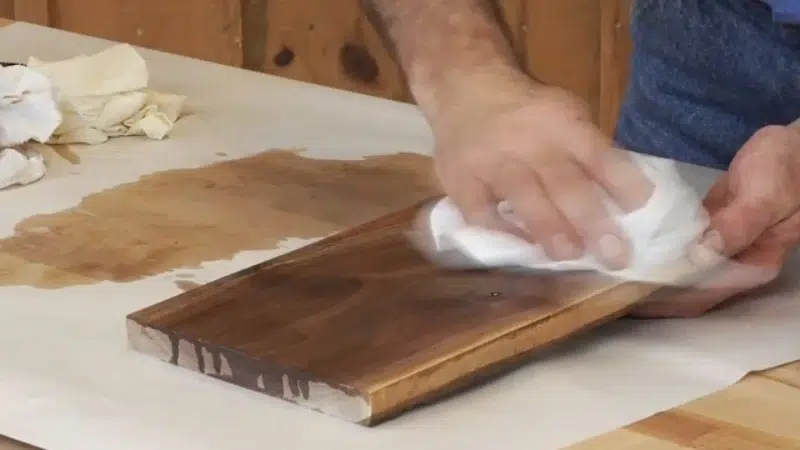
Even with a clean spray, microbubbles13 can occasionally form. Proper sanding between coatsand controlled curing help eliminate defects and build that crystal-clear finish layer by layer.
Wet Sanding Process
- Use 800–1200 grit waterproof sandpaper.
- Sand with light pressure in straight lines, not circles.
- Rinse frequently and dry fully before recoating.
Consejos de curado
✔ Allow at least 12 hours between heavy lacquer coats
✔ Avoid forced drying unless using low-temp ovens (≤45°C)
✔ Test with fingernail or gloss meter before next coat
One of the biggest lessons I’ve learned: never rush between layers. Letting lacquer rest fully is what allows trapped air to escape naturally before it becomes permanent.
Conclusión
Applying piano lacquer to large-size luxury gift boxes demands more than spraying skill—it requires scientific control of every step.
To ensure a bubble-free finish:
- Seal and level the wood before spraying.
- Mix lacquer slowly, adjust viscosity, and strain before use.
- Use calibrated spray tools and control airflow carefully.
- Sand gently and allow full curing between coats.
With patience, precision, and the right environment, even large lacquered surfaces can shine like glass—reflecting not just light, but the excellence of your brand.
Marca: WoodoBox
Eslogan: Cajas de madera personalizadas, hechas a la perfección
Página web: www.woodobox.com
-
Understanding the effects of extended open time can help you improve your lacquer application techniques and avoid air bubbles. ↩
-
Learning about overlap zones can enhance your spraying technique, ensuring a smoother finish and fewer imperfections. ↩
-
Exploring the relationship between operator fatigue and application quality can lead to better practices and results in your projects. ↩
-
Learn how moisture content impacts wood finishing to achieve a flawless final product. ↩
-
Understanding viscosity and mixing techniques is crucial for achieving a smooth finish without bubbles in lacquer applications. ↩
-
Understanding HVLP guns can help you optimize your spray application and reduce bubble formation in finishes. ↩
-
Exploring the advantages of these brushes can enhance your application technique and minimize air trapping. ↩
-
Understanding solvent flash-off is crucial for achieving a perfect finish. Explore this link to learn more about its impact on drying processes. ↩
-
Discover how Positive Pressure Spray Booths can enhance your drying environment and improve finish quality. Click to learn more! ↩
-
Learn how Downdraft Ventilation can optimize your drying process and minimize defects in finishes. This resource is invaluable for professionals. ↩
-
Exploring this resource will provide insights into how sanding enhances the finish quality and clarity of your projects. ↩
-
Understanding slow curing can help you achieve a flawless finish by allowing air to escape and preventing defects. ↩
-
This link will help you learn about the causes of microbubbles and effective prevention techniques for a perfect finish. ↩





